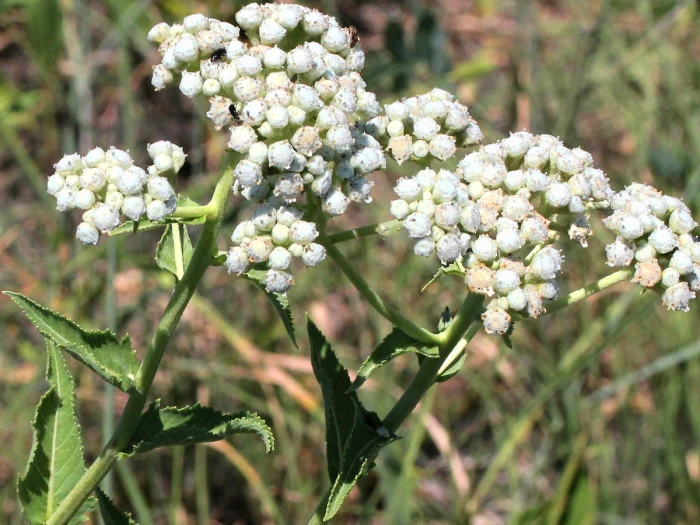Wild Quinine
(Parthenium integrifolium)
Wild Quinine (Parthenium integrifolium)
/
/

Peterwchen
CC BY-SA 4.0
Image By:
Peterwchen
Recorded By:
Copyright:
CC BY-SA 4.0
Copyright Notice:
Photo by: Peterwchen | License Type: CC BY-SA 4.0 | License URL: https://creativecommons.org/licenses/by-sa/4.0 | Uploader: Peterwchen | Publisher: Wikimedia Commons | Title: Parthenium_integrifolium-flowering.jpg | Notes: Uploaded own work with UploadWizard |




















































Estimated Native Range
Climate Requirements for Holladay, Utah
| This Plant | Your Site | Plant Suitability for Your Location | ||
|---|---|---|---|---|
| • Precipitation | 13" - 77" | 19" | Your precipitation may be insufficient for this plant. Irrigate N" / year. | Irrigate N" / year |
| • High Temp. | 64°F - 94°F | 92°F | Your summer temperatures are normal for this plant. | Excellent |
| • Low Temp. | -3°F - 46°F | 20°F | Your winter temperatures are normal for this plant | Excellent |
This plant should grow well at your location with about N inches per year (Y minutes per month) of irrigation.
Summary
Parthenium integrifolium, commonly known as Wild Quinine, is a deciduous perennial herb native to prairies, glades, and open woodlands in the Eastern and Southern United States. It typically grows to a height of three to five feet. The plant features an inflorescence composed of several flower heads, each with 15 or more whitish disc florets and 5 to 6 ray florets, blooming from June to September. The flowers emit a mild medicinal fragrance and are not particularly showy, but they add a subtle charm to the garden. The foliage is coarse and adds texture to plantings.
Wild Quinine is valued for its long blooming period, drought tolerance, and its ability to thrive in a variety of soil types, from sandy loam to clay. It is often used in native plant gardens, borders, and as a cut flower for dried arrangements due to its attractive winter inflorescences. In cultivation, it prefers full sun but can tolerate part shade. It is adaptable to hot and cold climates, making it a versatile garden plant. While it generally requires low to medium amounts of water, it is important to provide well-drained soil to prevent root rot. Wild Quinine is relatively low-maintenance and is available from many native plant nurseries.CC BY-SA 4.0
Wild Quinine is valued for its long blooming period, drought tolerance, and its ability to thrive in a variety of soil types, from sandy loam to clay. It is often used in native plant gardens, borders, and as a cut flower for dried arrangements due to its attractive winter inflorescences. In cultivation, it prefers full sun but can tolerate part shade. It is adaptable to hot and cold climates, making it a versatile garden plant. While it generally requires low to medium amounts of water, it is important to provide well-drained soil to prevent root rot. Wild Quinine is relatively low-maintenance and is available from many native plant nurseries.CC BY-SA 4.0
Plant Description
- Plant Type: Herb
- Height: 2-4 feet
- Width: 1-2 feet
- Growth Rate: Moderate
- Flower Color: White
- Flowering Season: Spring, Summer
- Leaf Retention: Deciduous
Growth Requirements
- Sun: Full Sun
- Water: Low, Medium
- Drainage: Slow, Medium, Fast
Common Uses
Drought Tolerant, Erosion Control, Fragrant, Low Maintenance, Showy Flowers
Natural Habitat
Native to prairies, glades, and open woodlands
Other Names
Common Names: American Feverfew, Eastern Feverfew, Prairie-Dock, Missouri Snakeroot, Prärieampfer, Partenium
Scientific Names: Parthenium integrifolium, Parthenium integrifolium var. henryanum, Parthenium amplectens, Parthenium hispidum var. hispidum, Parthenium integrifolium f. integrifolium
GBIF Accepted Name: Parthenium integrifolium L.